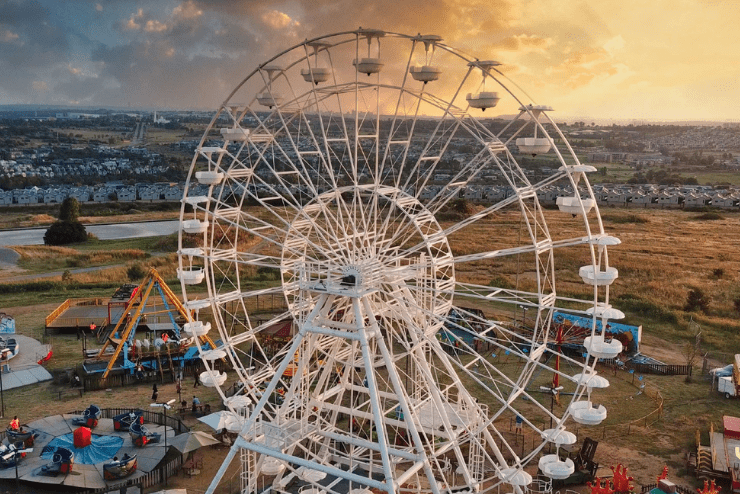Our Johannesburg North Attractions Diaries
Our Johannesburg North Attractions Diaries
Blog Article
The 45-Second Trick For Johannesburg North Attractions
Table of Contents4 Easy Facts About Johannesburg North Attractions ShownNot known Facts About Johannesburg North AttractionsJohannesburg North Attractions Things To Know Before You Get ThisSome Known Facts About Johannesburg North Attractions.Our Johannesburg North Attractions IdeasJohannesburg North Attractions - TruthsHow Johannesburg North Attractions can Save You Time, Stress, and Money.
You must maintain security in mind and tourists should stay alert at all times when in unknown surroundings. Speak with the locals when you remain in town to discover the area you are staying in. Johannesburg North attractions. When on the street (this doesn't apply to shopping center and other secure environments) finest basic suggestions is to try your ideal to resemble a neighborhood and to avoid displaying any type of kind of riches
4 Easy Facts About Johannesburg North Attractions Described
Teacher Revil Mason O. J. (Thomson, 1946) explored the Witwatersrand's pre-colonial history. His archaeological work took off the 'em pty land' myth, according to which the region was devoid of human habitation prior to the arrival of European settlers. In his publications Prehistory of the Transvaal: A Document of Human Activity (1962) and Beginnings of Black Individuals of Johannesburg and the Southern Western Central Transvaal AD 3501880 (1986 ), Teacher Mason demonstrated the extent of social and financial growth in the area before Europeans set foot right here.

Johannesburg North Attractions Things To Know Before You Buy
In 1878, David Wardrop found gold in quartz capillaries at Zwartkop, north of Krugersdorp. In 1881, Stephanus Minnaar came throughout gold on the farm Kromdraai, near the Cradle of Mankind.
In March 1886, a protrusion (soon to be called the Key Coral reef) was discovered, quite fortuitously, on Gerhardus Oosthuizen's farm Langlaagte. Some state that the Lancastrian coal miner George Walker found this coral reef. An additional travelling English miner, George Harrison (that had previously operated in Australian mines) acquired a prospecting permit in regard of Langlaagte in May 1886.
He determined to move on in a pursuit for greener fields, and disposed of his Langlaagte claim for the handsome amount of 10. Alas: beneath lay the richest goldfield ever before found. The discovery of this rich auriferous reef provoked a gold rush that signalled the end of bucolic tranquillity in the southerly Transvaal.
It would, within six years, come to be my company the largest town in southern Africa. Within a decade, it would make the Z. A. R. up until then an anarchical and bankrupt little state the wealthiest country in Africa. By the millenium, the Z. A. R. was to go beyond Russia, Australia and the USA of America to end up being the world's leading gold producer, creating more than a quarter of the globe's gold.
Things about Johannesburg North Attractions
It was called Ferreira's Camp, called after Colonel Ignatius Ferreira. He was a Boer adventurer upon whom the British authorities had presented the status of Companion of the Most Differentiated Order of St Michael and St George (entitling him to the post-nominal letters C. M. G.) in thankfulness for his duty in the war that had actually deposed the Pedi king Sekhukhune in 1879.
Two various other camps were developed: Meyer's Camp on the farm Doornfontein, and Paarl Camp. The latter was nicknamed Afrikander Camp; many individuals from the Cape Nest worked out there.

See This Report about Johannesburg North Attractions
This name got currency by word of mouth, such that the State Assistant affirmed the name to the Mining Commissioner on 9 October 1886. Stands in the village were auctioned on 8 December 1886. While some stands were offered for 10, others were knocked down for just sixpence.
Two years later, these erven were to transform hands for as long as 750 each. The tented camps decreased as a view it dorp of corrugated iron structures created and increased north of the mines situated along the Key Coral Reef Roadway. Locations such as Jeppe's Town (where working-class immigrants erected their homes) and Doornfontein (where the wealthy brand-new 'Randlords' began to construct their luxurious homes) were soon added to the ever-expanding map of the community.
The Main Principles Of Johannesburg North Attractions
Besides the road names, there were no indicators of Johannesburg being positioned in a Dutch-speaking country. Several years later, C. W. Kearns O. J. (one of the first kids registered at St John's College in 1898) would certainly recall: 'An odd truth regarding Johannesburg was that, although it remained in the [Boer Republic], nearly every person spoke English and even the Government servants dealt with one in English, unless they were initial dealt with in the Taal (or Low Dutch)'.
Britain had a rate of interest in making certain optimum conditions for gold production on the Witwatersrand, and that the gold was exported to London rather than Berlin a crucial made all the much more clamant by the Z. A. R.'s increasing toenadering with Germany. Mine proprietors got on a collision training course with President Kruger, whose policy of monopolistic giving ins (usually granted to his cronies) avoided mining companies from obtaining materials of materials (specifically dynamite) and work on their own, less costly terms
Little Known Facts About Johannesburg North Attractions.
In 1890, the Volksraad had actually limited the franchise business to white males who had actually resided in the Z. A. R. for fourteen years or longer, hence invalidating a lot of the immigrants (who occurred to be the significant factors to the fiscus). Anxiety for the ballot was a plain pretense for advertising a various agenda; the majority of uitlanders regarded themselves as short-term visitors and had no intent of continuing to be in the Z.
Report this page